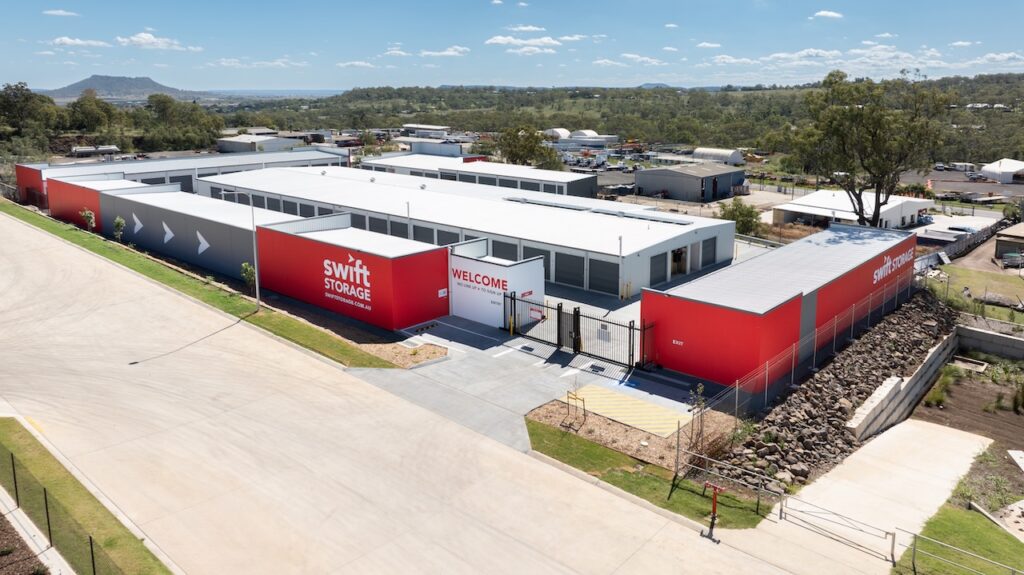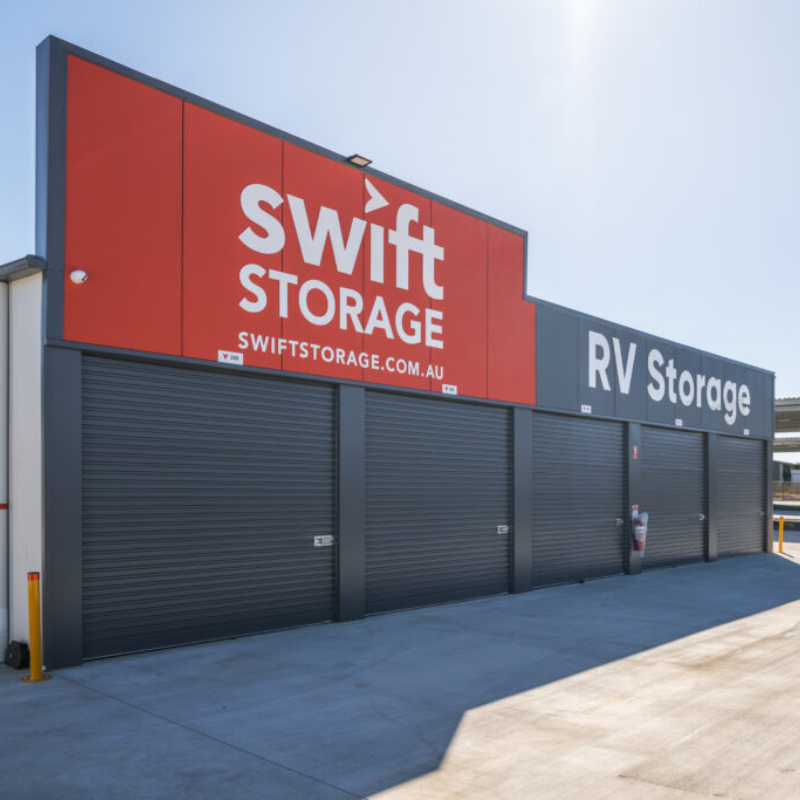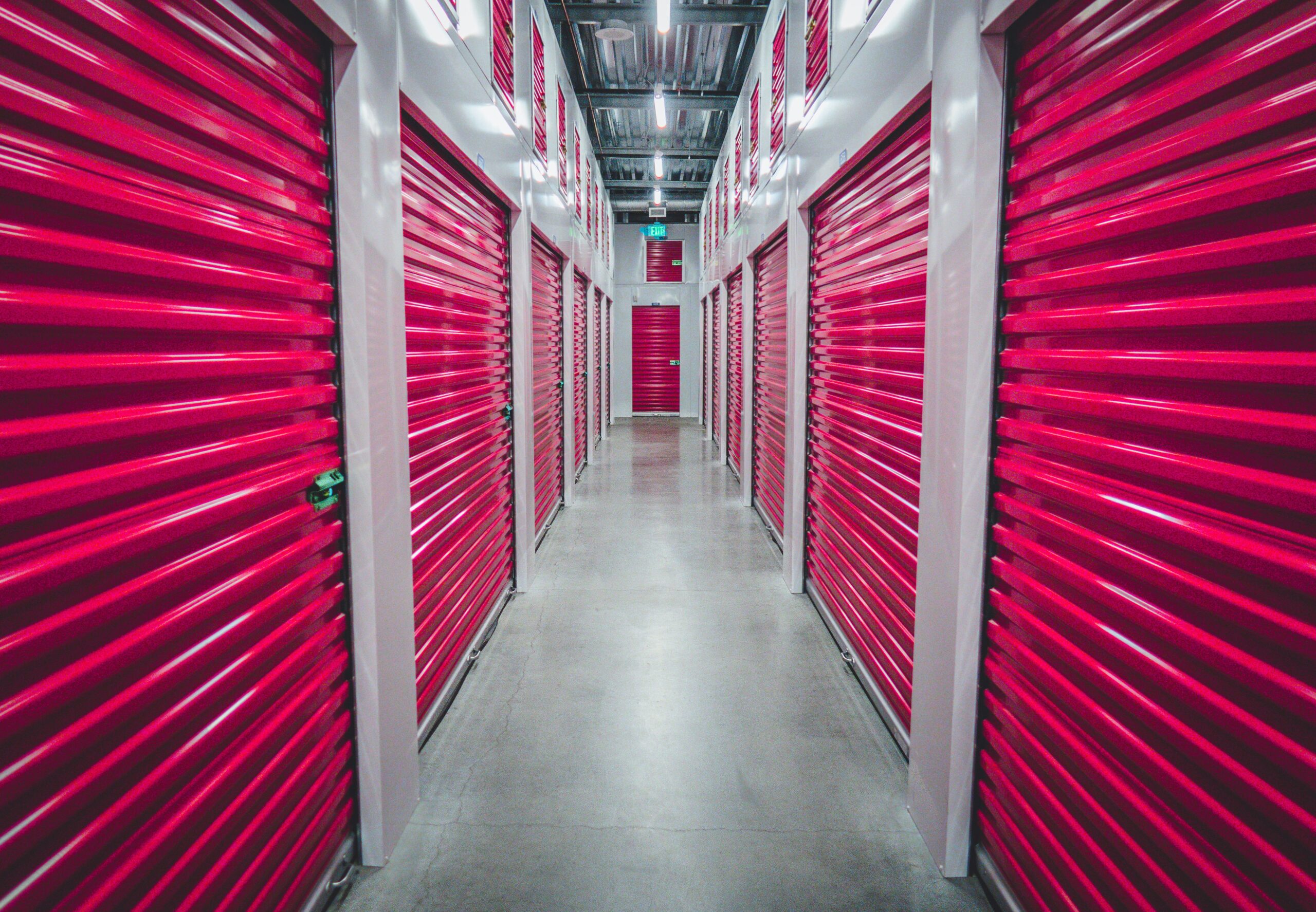Reports have it that Queensland has been hit with the highest rent rise in the country. Little wonder many are seeking alternatives to renting a living space.
But is storage space a viable alternative? Can you live in a storage unit? And what are the implications of doing so?
Let’s quickly go over the potential challenges and other alternatives you might want to consider.
Key Summary
- No, you can’t live in a self-storage unit because several zoning laws prohibit it.
- However, you can explore alternative living spaces like rent-to-own, prefabricated homes, and camping.
- If none of these alternatives offer enough space for your personal belongings, consider secure self-storage solutions in any of our 13 facilities across Queensland.
- Most importantly, apart from the legal consequences, living in a storage unit comes with varying health risks, making it ethically a bad idea.
Table of Contents

Is Living in a Storage Unit Legal in Queensland?
The short answer is no.
In Queensland, Australia, zoning laws are strict regarding the use of land and buildings. These laws are designed to ensure that each area of land is used in a way that is suitable and safe for that particular purpose.
“Storage units are specifically zoned as commercial properties, which means they are intended for the storage of goods, not for residential living. Living in a storage unit simply doesn’t align with the intended use of these spaces.”
In addition to zoning laws, storage units lack essential amenities that humans require. Living in one could pose significant health and safety risks, as discussed below.
The Risks and Challenges of Living in a Storage Unit
Despite their relative affordability compared to traditional houses, living in a storage unit presents some challenges you might want to consider, and they include the following:
- You are exposed to mould and mildew
- There are few to no essential amenities
- Storage temperatures are not suitable for humans
- Storage securities are not designed for humans
- It’s strictly illegal
1. You Are Exposed to Mould and Mildew
One of the most significant challenges of living in a storage unit is the threat of mould and mildew. Without adequate air circulation and natural light, these facilities can quickly become breeding grounds for these unwanted guests.
Most storage units are not designed with ventilation systems meant to support human habitation. Consequently, moisture from the environment can seep in, creating the perfect conditions for mould growth. This not only ruins personal belongings but also poses a serious health risk.
Exposure to mould and mildew can lead to respiratory problems, allergic reactions, and long-term health issues such as asthma or chronic sinus infections. Therefore, living in such a space without proper ventilation is deemed unsafe.
2. There Are Few to No Essential Amenities
Another significant challenge that makes living in a storage unit impractical is the lack of basic amenities. Storage units are not equipped with running water, electricity, or sanitation facilities like toilets.
This lack of essential services poses a significant challenge to maintaining adequate well-being and performing everyday tasks. For instance, maintaining personal hygiene becomes nearly impossible without access to running water.
Furthermore, cooking or even heating food is risky without the necessary utilities, leading inhabitants to resort to dangerous alternatives like camping stoves or portable heaters, which can escalate the risk of fire and accidents. The absence of these amenities emphasises that such spaces are not intended for residential use.

3. Storage Temperatures are Not Suitable for Humans
Another critical downside of living in a storage unit is the lack of proper insulation or heating. Storage facilities are built to house items in an enclosed space, not people. Therefore, they do not meet the temperature regulation standards necessary for human comfort and safety.
During the summer, temperatures inside these units can soar, creating an unbearable living environment. Conversely, in colder months, the absence of heating can lead to freezing conditions.
These extreme temperature fluctuations contribute to discomfort and present severe health risks, such as declining mental health, heat exhaustion, or hypothermia.
4. Storage Securities Are Not Designed for Humans
Storage units are typically not equipped with safety measures needed for human habitation, such as fire alarms or emergency exits that adhere to residential building codes. The use of inappropriate appliances like portable heaters or hot plates increases the risk of fire hazards.
Furthermore, storage facilities are often only monitored for security against theft, not for the safety of residents. This lack of oversight can lead to dangerous situations going unnoticed, putting anyone living in a storage unit at considerable risk. Therefore, the decision to stay in a storage unit compromises personal safety and health. Similarly, if you are with children, you may get into trouble with Child Safety Services.
5. It’s Strictly Illegal
Living in a storage unit isn’t just impractical and unsafe; it’s also illegal, and no storage facility staff will allow you in. And if you plan to sneak in, hoping to go unnoticed, you can be sure to be picked up by the security cameras.
Due to zoning laws and property use restrictions in the storage industry, most storage facilities strictly prohibit using units as living spaces. These facilities are typically zoned for commercial or industrial purposes, not residential living.
If you violate these terms, you may lose access to your facility, get evicted, face fines, or even legal action from the storage company. The legal ramifications of being caught living in a storage unit can have long-term consequences, affecting future housing opportunities and financial stability. Rather than risking these penalties, exploring legal and affordable housing alternatives is a wiser and safer choice.
Alternatives to Living in a Storage Unit
Given the ethical and legal challenges associated with living in self-storage units, we advise seeking out alternative options to avoid danger.
When facing housing insecurity, you should find any of the following alternatives more suitable than living in a storage facility:
- Rent-to-own sheds
- Prefabricated homes
- Camping
1. Rent-to-Own Sheds
When considering alternatives to living in a storage unit, rent-to-own sheds offer a compelling option. These sheds are not just a place to store your belongings; they can eventually become a permanent asset.
Unlike storage units, which often come with escalating rental costs and restrictions, rent-to-own sheds provide flexibility and ownership potential. They enable you to pay over time, with no credit checks, and eventually own the space outright. This makes for a secure investment, offering a personalised, organised, and easily accessible storage solution.
Moreover, rent-to-own sheds can be customised to meet your specific needs. This means you can design the interior to include shelving, workspaces, or even a small living area if zoning regulations permit.
The key advantage here is that you don’t just secure a temporary storage solution; you gain a versatile space that can evolve with your needs. For those who are frequently moving or lack permanent housing, this can be a strategic investment in personal space and security.
2. Prefabricated Homes
Prefabricated, or prefab homes, are a swift and sustainable alternative to storage units, especially if you’re contemplating a temporary living arrangement. These homes are constructed off-site and then transported to your location, reducing construction time and often lowering costs compared to traditional building methods. Prefab homes are celebrated for their energy efficiency and modern design, making them an attractive choice for eco-conscious individuals.
Prefab homes come in a variety of designs and sizes, allowing you to choose a model that fits your budget and lifestyle needs. They can provide a comfortable living space with all the amenities you would expect in a traditional home, but with the added benefits of reduced environmental impact and lower utility bills. For those needing a quick housing solution without compromising on quality or sustainability, prefab homes are a great alternative.
3. Camping
Camping, whether in a tent, truck, or van, offers a flexible and adventurous alternative to living in a storage unit. This option allows you to embrace a minimalist lifestyle, carrying only the essentials and enjoying the freedom to move as you please. For many, camping represents not just a temporary living solution but a way to connect with nature and explore new environments.
As good as they seem, these alternatives may not always have enough space to store all your belongings. In that case, you should consider storage units, but not for living—rather, for storage. To improve your overall living experience, consider renting secure self-storage to store valuables and large items you can’t always take along. Check out our 13 facilities spread across Queensland, Australia, to identify a storage option suitable for your needs.

How Swift Storage Ensures Security and Convenience
Swift Storage is your go-to storage solution in Queensland. Our facilities offer advanced security, flexible access control, and convenience.
1. Advanced Security Measures
When it comes to securing your belongings, Swift Storage leaves no stone unturned. We offer state-of-the-art security systems designed to provide peace of mind to you, our customers. Each unit comes equipped with 24-hour alarm monitoring, ensuring that any unauthorised access is immediately detected and addressed. This vigilant approach minimises the risk of theft or damage, allowing you to store your valuables with confidence.
Additionally, we utilise sophisticated digital video surveillance across our premises. The strategic placement of cameras allows for comprehensive coverage of the facility, leaving no blind spots. The footage is continuously monitored by trained security personnel adept at recognising suspicious activities. This combination of technology and human oversight creates an impenetrable barrier around your stored items.
2. Flexible Access Control
Access control is another critical aspect of Swift Storage’s security strategy. The facility employs advanced biometric authentication systems, which require authorised individuals to provide unique biological identifiers, such as fingerprints or facial recognition, to gain entry. This method of access control greatly reduces the likelihood of unauthorised persons entering the storage area.
In tandem with biometric systems, we also implement multi-factor authentication for additional security layers. This process typically involves something you know (like a password), something you have (such as a smartphone), and something you are (biometric data). By requiring multiple forms of identification, Swift Storage ensures that only legitimate users can access our storage units.
3. Convenience-Powered Technology
Beyond security, Swift Storage offers unparalleled convenience through our user-friendly technology. Our facility’s digital platform allows customers to reserve storage units online in minutes, eliminating the need for long forms and tedious paperwork. This hassle-free booking process is perfect for both individuals and businesses who value their time and prefer a quick, seamless experience.
Moreover, Swift Storage provides flexible rental options to accommodate the varying needs of our clients. Whether you’re a small business owner needing temporary space or a family in the middle of a move, our rental terms are accommodating and straightforward. With options ranging from short-term to long-term rentals, you can choose the duration that best fits your requirements without feeling locked into an inflexible contract.
Ready to start storing your items right away? Check out our self-storage sites to find the nearest location.
Frequently Asked Questions
Can I live in a storage unit?
No, you cannot live in a storage unit. While some might consider it during financial hardships due to its seemingly convenient nature, many storage facilities are not designed or legally permitted for residential living. They lack essential amenities like plumbing, electricity, and proper ventilation, making them unsafe and unsuitable for habitation. Furthermore, your storage unit lease agreement will typically prohibit living in your rented space, so violating this will have legal consequences.
Is it safe to put a bed in a storage unit?
Yes, you can store a bed in a storage unit, but it’s important to use a climate-controlled unit if possible. Even if your mattress is clean and protected with plastic, extreme temperature fluctuations and humidity can lead to damage. A climate-controlled environment helps maintain a stable temperature and humidity level, preserving the mattress’s condition.
Will clothes be OK in a storage unit?
Yes, clothes can be stored in a storage unit, but it’s best to use storage bins rather than airtight containers. Storage bins allow the fabrics to breathe, preventing moisture and odours from being trapped, which helps protect your clothes while in storage.
Conclusion
So, can you live in a storage unit in Queensland, Australia? While the idea of living in a storage unit might seem tempting due to its affordability and flexibility, it’s not a viable option. Legal restrictions and a lack of essential amenities make it impractical and unsafe.
Self-storage facilities are designed for storing belongings, not for habitation. If you’re in transition, explore other housing options that comply with local laws and provide the comfort you need.Lastly, when looking for storage space to store additional items, choose a security-conscious provider like Swift Storage. We offer convenience and security, and ensure your possessions are safe while you find the perfect new place to call home. Book a unit now!


